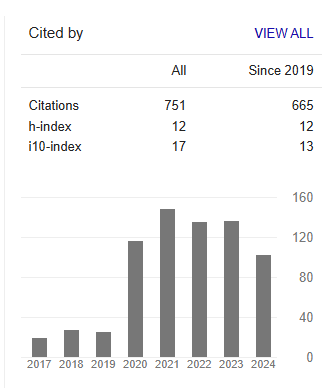Effects of Cumulative Doses of Corticosteroids On the Recovery of Patients with Covid-19
Abstract
Hamid Reza Samimagham, Reza Farrokh Seresht, Soroosh Jaber Ansari, Bita Sadeghi, Mitra KazemiJahromi
Background: Corticosteroids suppress the immune system and have been proposed as a treatment for the severe form of coronavirus disease 2019 (COVID-19) due to their potential ability to inhibit the COVID-19- induced cytokine storm. We aimed to evaluate the effects of cumulative doses of corticosteroids on the recovery of COVID-19 patients. Patients and methods: In this descriptive cross-sectional study, we retrospectively evaluated patients with COVID-19 (confirmed by polymerase chain reaction [PCR]) receiving corticosteroids at Shahid Mohammadi Hospital, Bandar Abbas, Iran during June-October 2020. All patients had been admitted to the general wards and not the intensive care unit. COVID-19 was not severe in any of the patients. Beside corticosteroids, all patients had received similar standard COVID-19 treatment according to the National COVID-19 Committee protocols. In addition to the demographic features of the patients including age and gender, COVID-19 symptoms, respiratory rate (RR), lactate dehydrogenase (LDH) level, C-reactive protein (CRP) level, oxygen saturation (SpO2 ), lymphocyte percentage and count, and lung infiltration (in chest computed tomography) on admission and at the last evaluation before discharge were extracted from the patients’ medical files.
Results: A total of 200 patients with confirmed COVID-19 were included in this study. The mean age of the patients was 51.65 ± 9.35 years and 117 (58.5%) were male. The administered corticosteroid was dexamethasone in 55%, methylprednisolone in 32.5%, and prednisolone in 12.5%. The mean administered cumulative corticosteroid dose was equal to 82.69 ± 59.40 mg prednisolone. All COVID-19 symptoms, including fever, cough, dyspnea, headache, body ache, and anosmia/ageusia, decreased in the patients. However, there was no significant difference between patients using < 65 mg of corticosteroids and those using ≥ 65 mg of the medicine regarding the final status of symptoms. The increase in SpO2 was significantly higher in patients using < 65 mg of corticosteroids (P = 0.008). Moreover, the proportion of patients with negative final CRP was significantly higher in this group (P < 0.001). On the contrary, hospital length of stay was significantly shorter in patients using ≥ 65 mg of corticosteroids (P = 0.034). The two groups had no significant differences in terms of LDH levels, lymphocyte percentage and count, RR, and the final status of lung infiltration (P > 0.05).
Conclusions: While the cumulative dose of corticosteroids equal to < 65 mg of prednisolone is associated with increased SpO2 and decreased CRP in COVID-19 patients, it leads to prolonged hospital stay compared to the ≥ 65 mg dose of corticosteroids.



